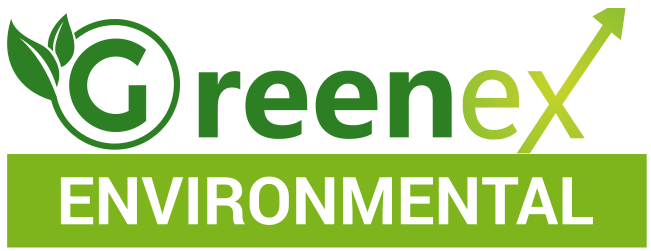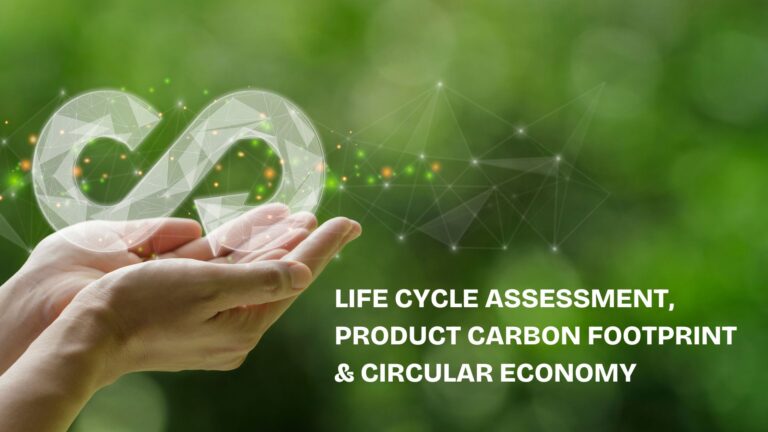
Life Cycle Assessment Services ,Environmental Sustainability Services, Carbon Footprint Services, Environmental Impact Assessment Services, Sustainability Report Services, Environmental Product Declaration Services, Green Technology Services, Lifestyle For Environment Services, Measuring Carbon Footprint Services, Green Building Certification Services, Environmental Audit Services , Water Footprint Services

LCA vs. PCF vs. Circular Economy: Decoding Sustainability Metrics for a Greener Future
In today’s sustainability-driven world, businesses are under increasing pressure to reduce their environmental footprint and build more sustainable operations. To do so effectively, they often turn to various frameworks and assessment tools to evaluate their environmental impact. Three key concepts that often come into play are Life Cycle Assessment (LCA), Product Carbon Footprint (PCF), and the Circular Economy. While each of these approaches is distinct, they are interconnected and can collectively help organizations create meaningful environmental strategies. So, what exactly do these terms mean, and which one is right for your business? Let’s dive into the differences and see how they complement each other.
1. Life Cycle Assessment (LCA): The Holistic Approach
LCA is a comprehensive methodology used to assess the environmental impacts of a product, process, or service throughout its entire life cycle. Think of it as a “cradle-to-grave” analysis that takes into account every stage—from raw material extraction to manufacturing, distribution, use, and finally, disposal. The main goal is to identify areas where improvements can be made and highlight the stages with the most significant environmental impact.
Key Features of LCA:
- Full Spectrum Analysis: Evaluates multiple environmental impacts, such as energy consumption, water usage, and greenhouse gas emissions.
- Cradle-to-Grave vs. Cradle-to-Cradle: Can be modified to include a “cradle-to-cradle” approach, which considers how materials can be reused or recycled.
- Data-Driven Decision Making: Offers a solid foundation for strategic planning, helping businesses make environmentally sound choices about materials, production methods, and supply chains.
When to Use LCA:
If your business is looking to understand its overall environmental footprint or planning to implement comprehensive sustainability initiatives, LCA is your go-to tool. It’s ideal for companies wanting to identify hotspots, assess risks, and benchmark sustainability performance.
2. Product Carbon Footprint (PCF): Zeroing In on Climate Impact
PCF, on the other hand, is a more targeted metric that focuses specifically on the carbon emissions associated with a product’s lifecycle. It considers the greenhouse gases emitted during production, transportation, use, and disposal stages. While it’s more narrow in scope compared to LCA, it offers a deep dive into carbon impact, making it a crucial tool for companies with net-zero or carbon reduction goals.
Key Features of PCF:
- Carbon-Centric Focus: PCF exclusively measures the product’s climate impact, providing clear insights for carbon reduction strategies.
- Easier Implementation: Because it’s limited to carbon emissions, it’s often simpler and less data-intensive to implement than LCA.
- Alignment with Global Goals: Helps businesses align with international standards like the Paris Agreement and Science-Based Targets.
When to Use PCF:
If carbon emissions are a top priority, PCF is the right choice. It’s perfect for businesses aiming to cut down on greenhouse gases, make carbon-neutral products, or communicate their climate impact to stakeholders and customers.
3. Circular Economy: Redefining the End Game
Unlike LCA and PCF, which are assessment tools, the Circular Economy is a broader systemic framework designed to eliminate waste and keep materials in use for as long as possible. It moves away from the traditional linear model of “take-make-dispose” and promotes a regenerative approach, where resources are continually reused, refurbished, or recycled.
Key Features of Circular Economy:
- Resource Efficiency: Focuses on using materials sustainably, reducing waste, and designing products that can be repaired or recycled.
- Business Model Innovation: Encourages new business models such as product-as-a-service, remanufacturing, and shared platforms.
- Long-Term Value Creation: Shifts the emphasis from short-term profitability to long-term value creation through resource loops and resilience.
When to Implement Circular Economy Principles:
The Circular Economy is suitable for organizations looking to transform their entire business model and align with long-term sustainability goals. It’s particularly useful for industries with complex supply chains, such as manufacturing, electronics, and fashion, where waste and resource use are major concerns.
How Do These Concepts Interrelate?
While LCA and PCF are analytical tools, the Circular Economy is a strategic framework. Here’s how they complement each other:
- LCA in a Circular Economy Context: LCA can be used to measure the environmental benefits of adopting circular strategies, such as reusing materials or designing products for disassembly.
- PCF for Circular Products: PCF can help businesses quantify the carbon savings from circular initiatives, such as using recycled materials or extending a product’s lifespan.
- Circular Economy Beyond LCA and PCF: While LCA and PCF focus on quantifying impacts, the Circular Economy looks at redesigning processes and products to create systems that are inherently low-impact.
Choosing the Right Approach: What’s Best for Your Business?
Choosing between LCA, PCF, and Circular Economy principles depends on your sustainability goals, industry, and what you want to achieve:
- For Comprehensive Environmental Impact: Go with LCA. It’s the most holistic and detailed option, ideal for full-spectrum sustainability assessments.
- For Climate-Related Goals: Choose PCF if your primary focus is on reducing carbon emissions and meeting net-zero targets.
- For a Complete Business Transformation: Implement Circular Economy principles if you’re ready to rethink your business model and create a closed-loop system.
Ultimately, integrating these three concepts can lead to a more resilient, eco-friendly business strategy that not only reduces harm but also creates long-term value for both your business and the planet.
Conclusion
In the race to sustainability, there is no one-size-fits-all solution. Understanding the nuances between LCA, PCF, and the Circular Economy is the first step in choosing the right tool—or combination of tools—to achieve your environmental goals. Whether you’re looking to measure your product’s lifecycle impact, zero in on carbon emissions, or embrace a circular strategy, these frameworks offer invaluable guidance for navigating the complex landscape of sustainable business practices.